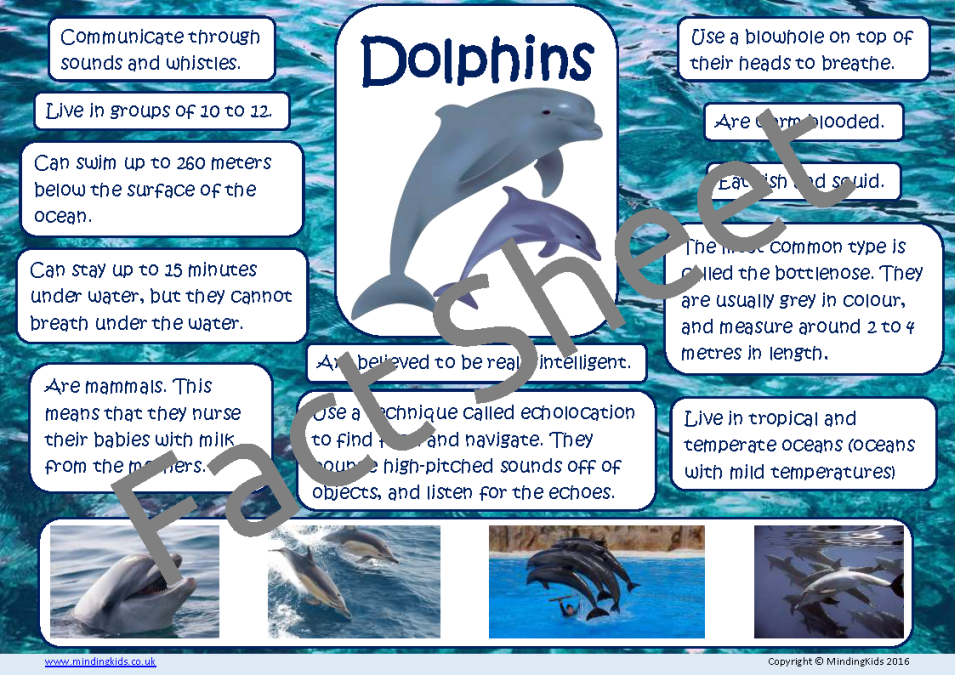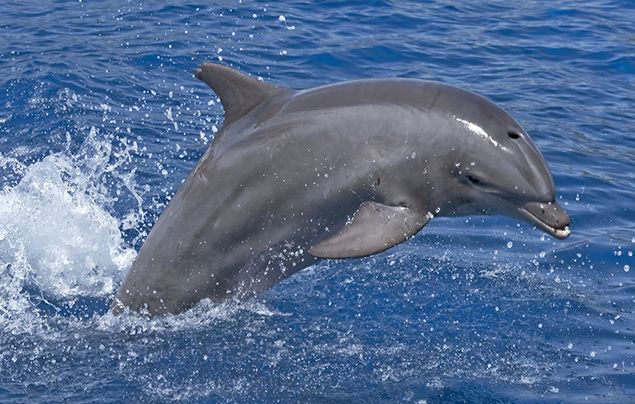Discover Just How Dolphin Facts Reveal Their Unique Social Structures
Discover Just How Dolphin Facts Reveal Their Unique Social Structures
Blog Article
Introduction Dolphin Information: Nature's Intelligent Marine Mammals
Dolphins, usually pertained to as one of the ocean's most intelligent inhabitants, exhibit an interesting range of actions and social frameworks that require closer assessment. With over 40 distinctive species, these marine animals not just show remarkable communication abilities and complex social interactions yet likewise have sophisticated cognitive capacities that test our understanding of non-human knowledge.
Dolphin Variety Variety
Dolphins are a varied group of marine creatures coming from the household Delphinidae, which incorporates over 40 unique varieties. This household includes widely known types such as the typical bottlenose dolphin (Tursiops truncatus), the orca or killer whale (Orcinus orca), and the risso's dolphin (Grampus griseus) Each types displays special physical features, actions, and adaptations that allow them to flourish in different marine environments.
Dolphin species vary substantially in size, ranging from the small Maui's dolphin (Cephalorhynchus hectori) at approximately 1.2 meters to the whale, which can get to sizes of as much as 9 meters. Their coloration also differs, with some types showing striking patterns that help with camouflage or social signaling. Additionally, dolphins inhabit varied environments, from seaside areas and estuaries to the open sea, showcasing their flexibility.
Study into dolphin species variety highlights the eco-friendly significance of these mammals, as they play essential functions in marine environments. Comprehending the different species is essential for preservation efforts, as numerous encounter hazards from habitat contamination, environment, and loss change, demanding targeted protection steps to guarantee their survival.
Social Frameworks and Behavior
The intricacy of dolphin types is mirrored in their complex social structures and habits. Dolphins are understood for their highly social nature, frequently developing groups called shells, which can vary from a couple of individuals to over a hundred. These sheaths are generally composed of relative, showcasing a matrilineal framework where females play a main role in maintaining social bonds and nurturing offspring.

Furthermore, some varieties of dolphins, such as orcas, show complicated social behaviors that can include sub-pods or clans with distinctive cultural techniques. These social frameworks are critical for the survival and wellness of dolphin populations, as they help with communication, collaboration, and the transmission of knowledge across generations. Understanding these social characteristics is important for preservation efforts and the protection of their natural habitats.
Interaction Strategies
Among the various techniques of communication, dolphins use a sophisticated selection of interaction methods that promote social cohesion and control within their capsules. These methods include articulations, body language, and echolocation, each serving unique functions in their social interactions.
Dolphins generate a large range of clicks, whistles, and pulsed audios, which function as their key singing interaction. Each dolphin has an one-of-a-kind signature whistle, comparable to a name, that allows people to identify one an additional even in big groups. These vocalizations can share various messages, such as signaling others to threat or collaborating team activities during hunting.
Along with articulations, body movement plays a vital function in dolphin interaction. Dolphin positions, such as leaping, spinning, or perhaps refined changes in alignment, convey emotions and objectives. For example, hostile displays might hinder rivals, while lively actions can enhance social bonds.
Echolocation, a biological finder system, more aids in navigation and hunting. By giving off acoustic waves and translating the returning echoes, dolphins can locate prey and obstacles effectively, showing their remarkable versatility in intricate aquatic settings. Collectively, these communication methods underscore the complex social lives of dolphins, highlighting their knowledge in browsing their underwater globe.

Knowledge and Issue Addressing
Identified for their sophisticated communication abilities, dolphins likewise display exceptional intelligence and analytic capacities that further boost their social interactions. Their cognitive abilities are shown by their ability to discover complex jobs, understand abstract principles, and adjust to numerous environmental challenges. Study has actually shown that dolphins can fix complex puzzles, demonstrating not just their cognitive adaptability yet likewise their capacity for preparation and insight.
Dolphins frequently participate in participating searching techniques, showcasing their capacity to function as a cohesive unit. This team effort requires innovative problem-solving abilities, as they must analyze their setting, determine possible prey, and collaborate their activities to achieve an usual objective. Additionally, dolphins have actually been observed utilizing devices, such as marine sponges, to safeguard their snouts while foraging on the sea floor, more exemplifying their cutting-edge analytic capabilities.

Human-Dolphin Communications
Human-dolphin communications have astounded lovers and scientists alike, highlighting the complicated relationship in between these intelligent aquatic animals and humans. From old times, dolphins have actually been illustrated in art and mythology, signifying harmony and intelligence (Dolphin Facts). Modern communications vary from clinical research and conservation efforts to leisure activities like dolphin enjoying and swimming with dolphins
Research has demonstrated that dolphins possess progressed social structures and communication skills, which promote their interactions with people. These experiences usually cultivate psychological links, with several people reporting feelings of joy and compassion throughout such experiences. However, it is important to come close to these interactions with care, as human activities can Go Here interrupt dolphin behaviors and environments.
Preservation efforts significantly concentrate on promoting liable communications, guaranteeing that human enthusiasm does not endanger dolphin well-being. Education programs intend to elevate awareness regarding the eco-friendly importance of dolphins, emphasizing the need for lasting practices.
Verdict
In summary, dolphins exemplify amazing intelligence and versatility within varied aquatic settings. Their elaborate social frameworks, advanced interaction techniques, and analytic abilities underscore the complexity of their actions. pop over here Human communications with these marine creatures highlight the significance of responsible conservation efforts to guarantee their survival and the defense of their habitats. Proceeded research and recognition are crucial for fostering a much deeper understanding of dolphins and advertising their well-being in an increasingly threatened community.
Dolphin types vary dramatically in dimension, ranging from the small Maui's dolphin (Cephalorhynchus hectori) at approximately 1.2 meters to the whale, which can reach lengths of up to 9 meters. Dolphins display a range of social interactions, including grooming and physical contact, which offer to strengthen partnerships and develop power structures.
Identified for their innovative interaction abilities, dolphins additionally show amazing knowledge and problem-solving capacities that additionally improve their social interactions. Modern communications range from clinical research study and preservation initiatives to entertainment tasks like dolphin swimming and watching with dolphins.
Study has demonstrated that dolphins possess advanced social frameworks and communication skills, which promote their interactions with humans.
Report this page